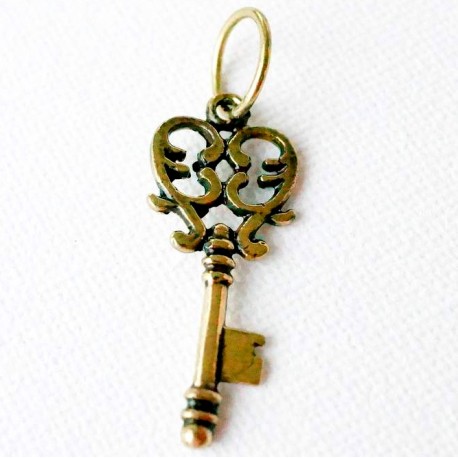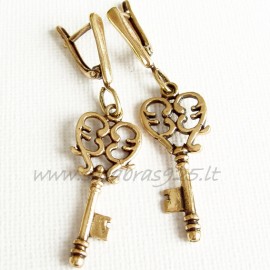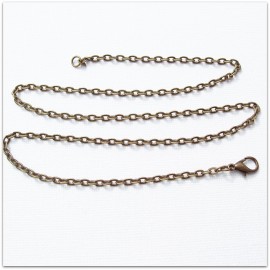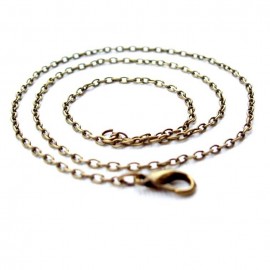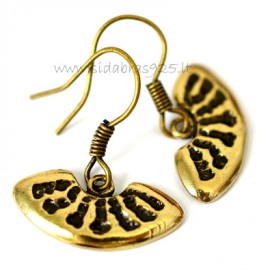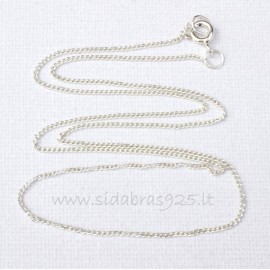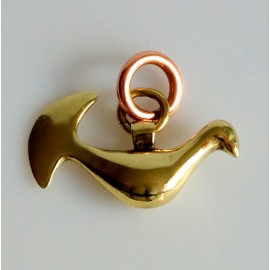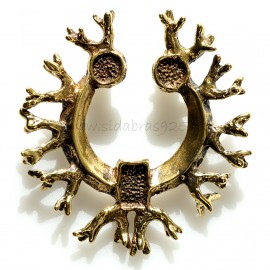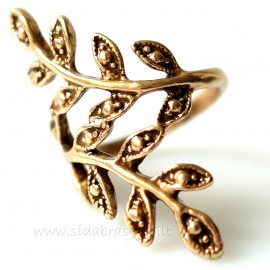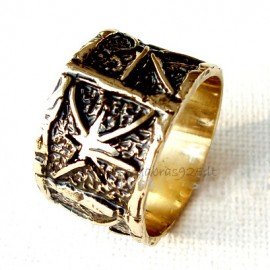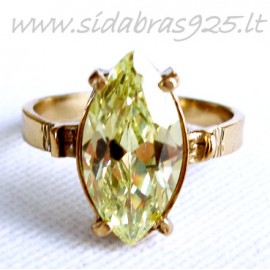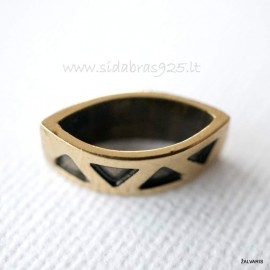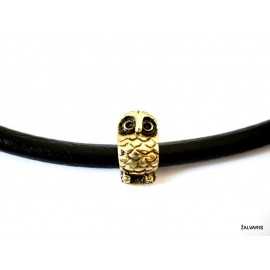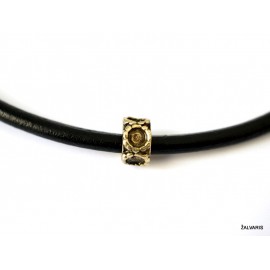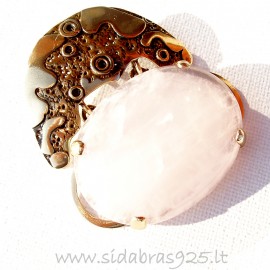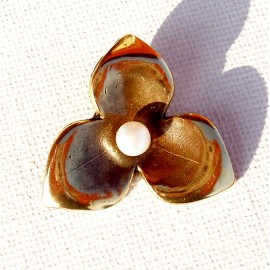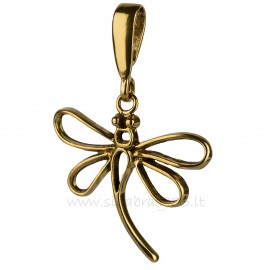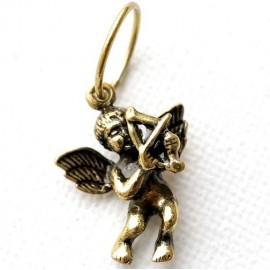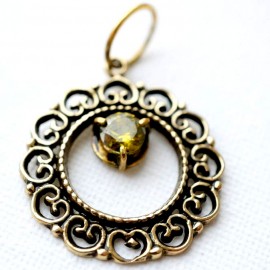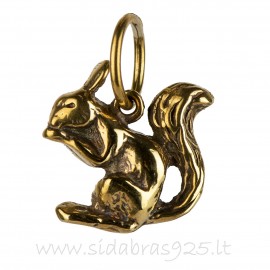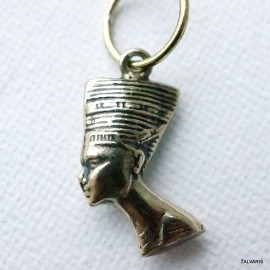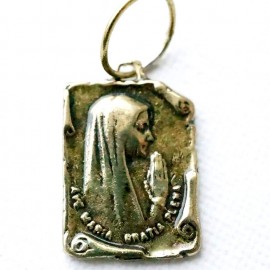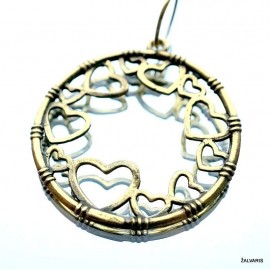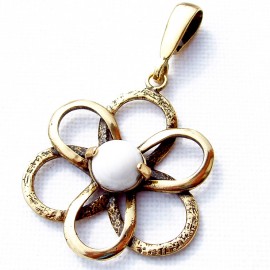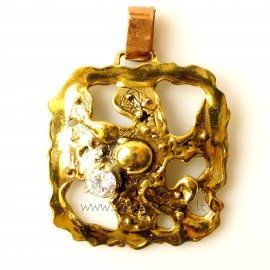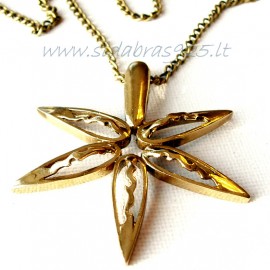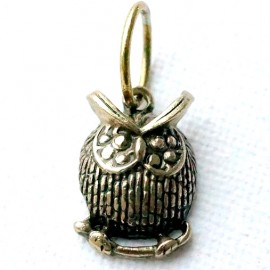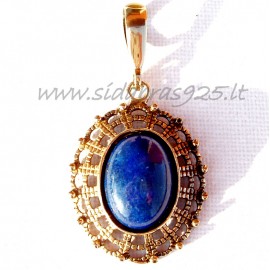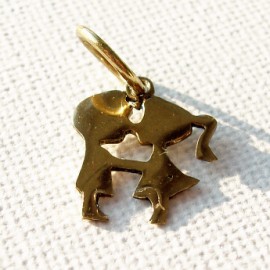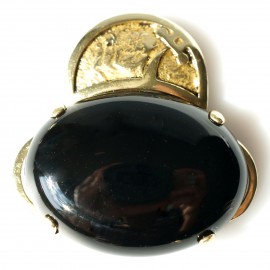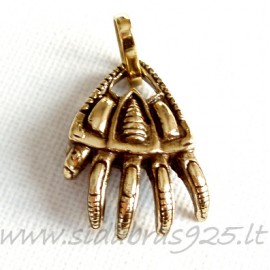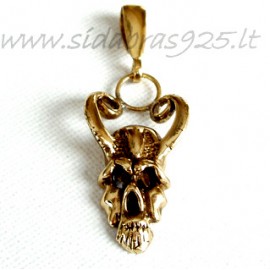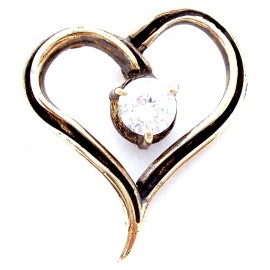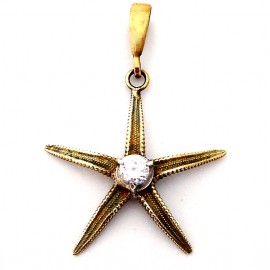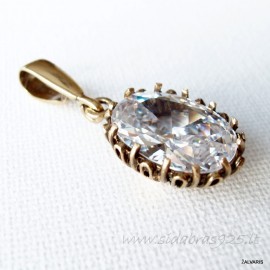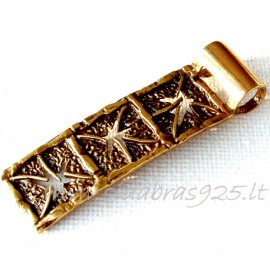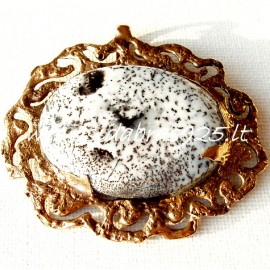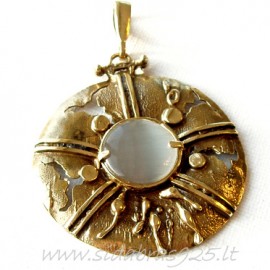No products
Product successfully added to your shopping cart
There are 0 items in your cart. There is 1 item in your cart.
Brass pendant "The key" ŽP521
Jewellery
13th – 14th c. a new type of keys, reminiscent of today's ones, spread in 56 places of the Grand Duchy of Lithuania, mostly in cemeteries, mounds and sacrificial places. This opened up wide spaces for various interpretations. The said keys were made of copper or other non-ferrous metal alloys, many of which are quite ornate.
Data sheet
| Metal: | Brass |
| Width: | 13 mm |
| Length (w/ loop): | 21,7 mm |
| Complemented: | Yes |
More info
Therefore, in the scientific literature, they are usually interpreted as symbolic, having no utilitarian meaning. Archaeologist Eugenijus Svetikas associates the keys with Christian symbolism, in which they are mostly St. Peter and St. Mortas attributes. According to the researcher, the cult of Martha is more probable in the GDL, because the owners of the keys were women and girls of different ages, moreover, the keys in the graves were mostly found in the pelvic-lumbar area, i. y. in the place where the keys are depicted in St. Mortas in iconography. According to other archaeologists, the keys were a symbolic adornment of a woman who ruled a certain wealth and had power and authority over a certain group of people.
Reviews
Tiksliai toks
Kokio tikėjaus tokį ir gavau, ir labai patiko metalas.

